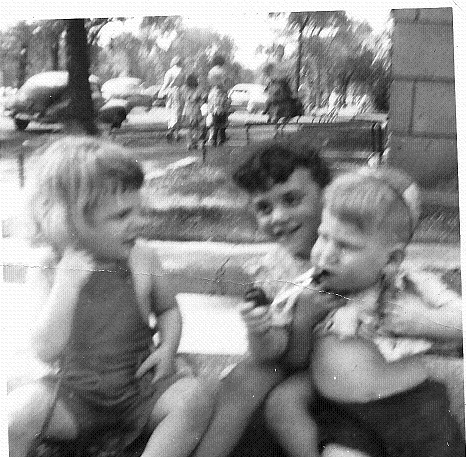By Larry Teren
 Are you old enough to remember watching first-run television programs in which the daddy came home from work every night wearing a suit and tie? Jim Anderson (Robert Young) of Father’s Knows Best, an insurance agent, always dressed up unless it was the weekend. He would rarely be seen in only his shirtsleeves but at least wearing a sweater. The same usually went for Mr. Cleaver (Hugh Beaumont) on Leave It To Beaver.
Are you old enough to remember watching first-run television programs in which the daddy came home from work every night wearing a suit and tie? Jim Anderson (Robert Young) of Father’s Knows Best, an insurance agent, always dressed up unless it was the weekend. He would rarely be seen in only his shirtsleeves but at least wearing a sweater. The same usually went for Mr. Cleaver (Hugh Beaumont) on Leave It To Beaver. There was also always the sartorially splendid Bentley Gregg, played by John Forsythe on Bachelor Father.
There was also always the sartorially splendid Bentley Gregg, played by John Forsythe on Bachelor Father.
If tv was mimicking real life, it meant that in the 1950’s and for most of the 60’s, gainfully employed men in office and business settings were always wearing suits. It was expected. Dad wore one as well when he went to work as an insurance agent to the office or out to see a client. The carpet salesman for Sears who lived upstairs of us also wore a suit. My young eyes came to the conclusion that if you were an adult male and had a meaningful non-factory type job, you wore a suit. And this was before central air conditioning was commonplace in cars and office buildings.
I’m sure that at some point during the day if one was not engaged in meeting with superiors or customers, that one was allowed to take off the jacket and even loosen the tie. But don’t even think of coming to work without that tie on. Or for that matter, a white shirt- not a colored one. It was also expected that one kept his hair trimmed, greased with a little dab of Brylcreem and parted from the side and towards the back, if foliage was available.
With the onset in the late 1960’s of the counter-culture hippie movement, things began to change rapidly in dress and grooming regulations. Hair started getting longer and dry despite the grumpy complaints from barbers begging for business. Colored shirts seemed to be acceptable as well. You didn’t even have to wear a suit jacket unless absolutely necessary but bring it to work just in case.
And it didn’t even need to be a suit- it could be a sports jacket and somewhat matching slacks.
Times were a-changing. By the early 1970’s, the stodgy, conservative Ed Sullivan was hosting his hit Sunday evening show sporting longer hair, combed to the side with a tilt to the front, pork-chop sideburns and darker coloring to demonstrate to the younger generation that he was just as hip. The suit, however, remained a staple of his professional demeanor. Heck, Dean Martin wore a tuxedo each week on his Thursday night variety show.
When I entered the work force in the mid to late 1970’s, men were wearing colored shirts to work with wider ties but not bothering to bring a suit or sports jacket to work. And the shirt could be short-sleeved if so desired. No one told you to get a haircut. Today, of course, things have swung back to men wearing their hair shorter. Part of it is because they don’t want to hide all the tattoos etched on the back of their neck.
Nowadays, anything goes. Oh, there are exceptions but for the most part office workers can come as they please. Several years ago someone decided to make Fridays “casual dress” day in America. Once no one objected to employees coming to work in tee-shirts and jeans, it seemed as if it slowly but eventually melded into any day of the week. Women now wear pants (some should really take a good look in a full length mirror) – years ago this would have been an affront if a female office worker did not wear a dress or skirt.
Now, women make a big deal about the right to bare, uh… well- they are vociferous about the right to nurse in the office and don’t care who looks. Some even insist that they have the right to bring their youngsters not yet in school to the office when it is too difficult to get a babysitter. After all, isn’t it fun to watch mommy work?
As for me, I just want to know when thongs come into play. Thank you, and drive home safely.
